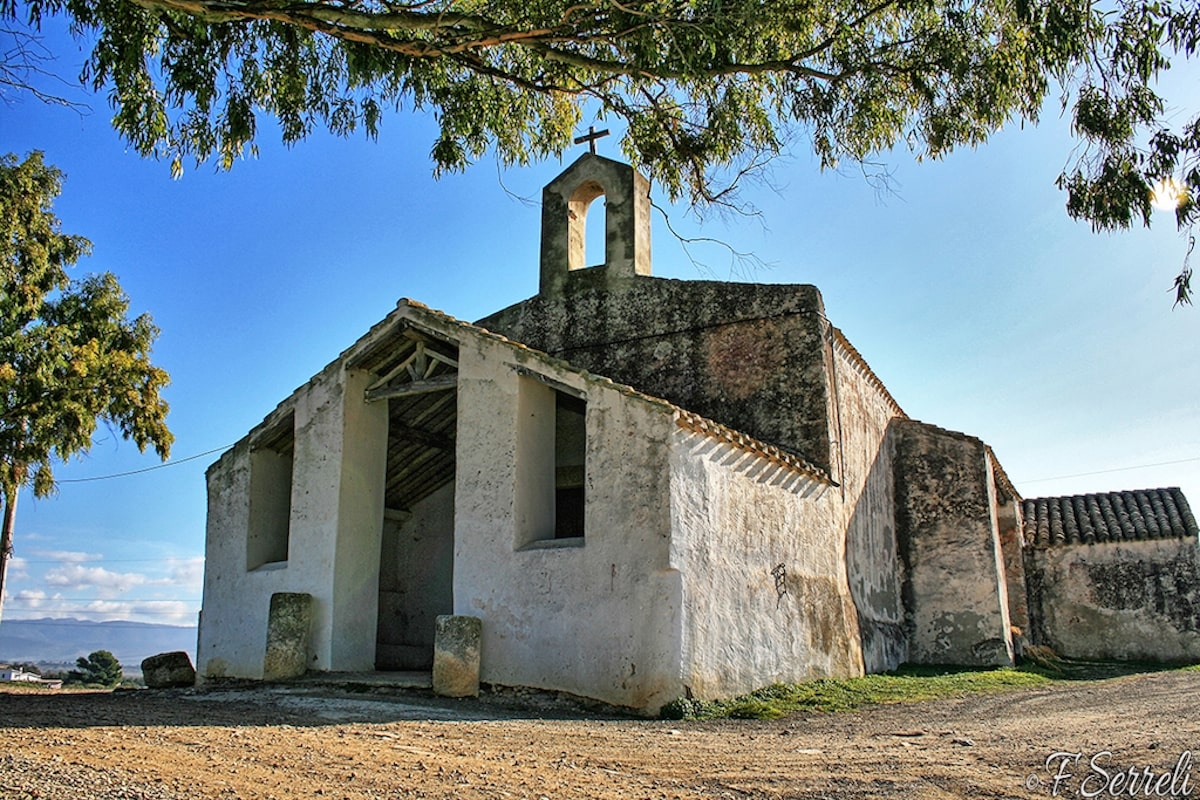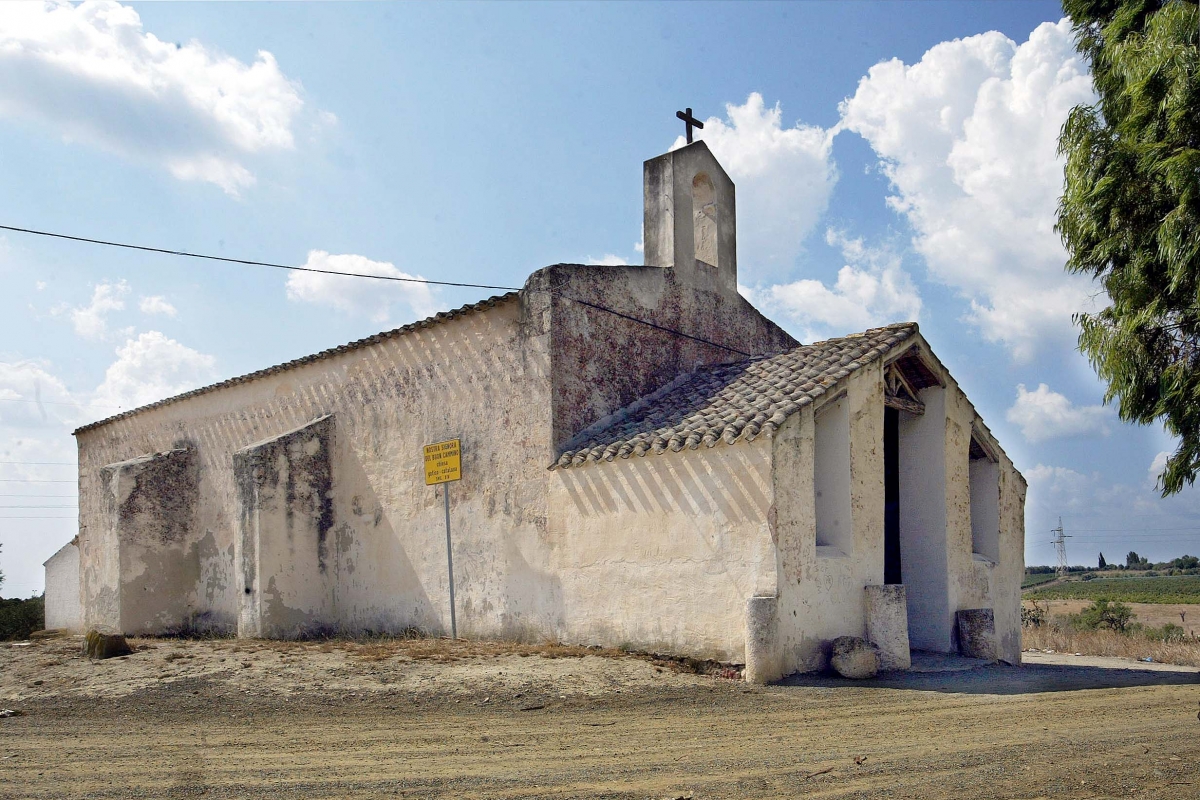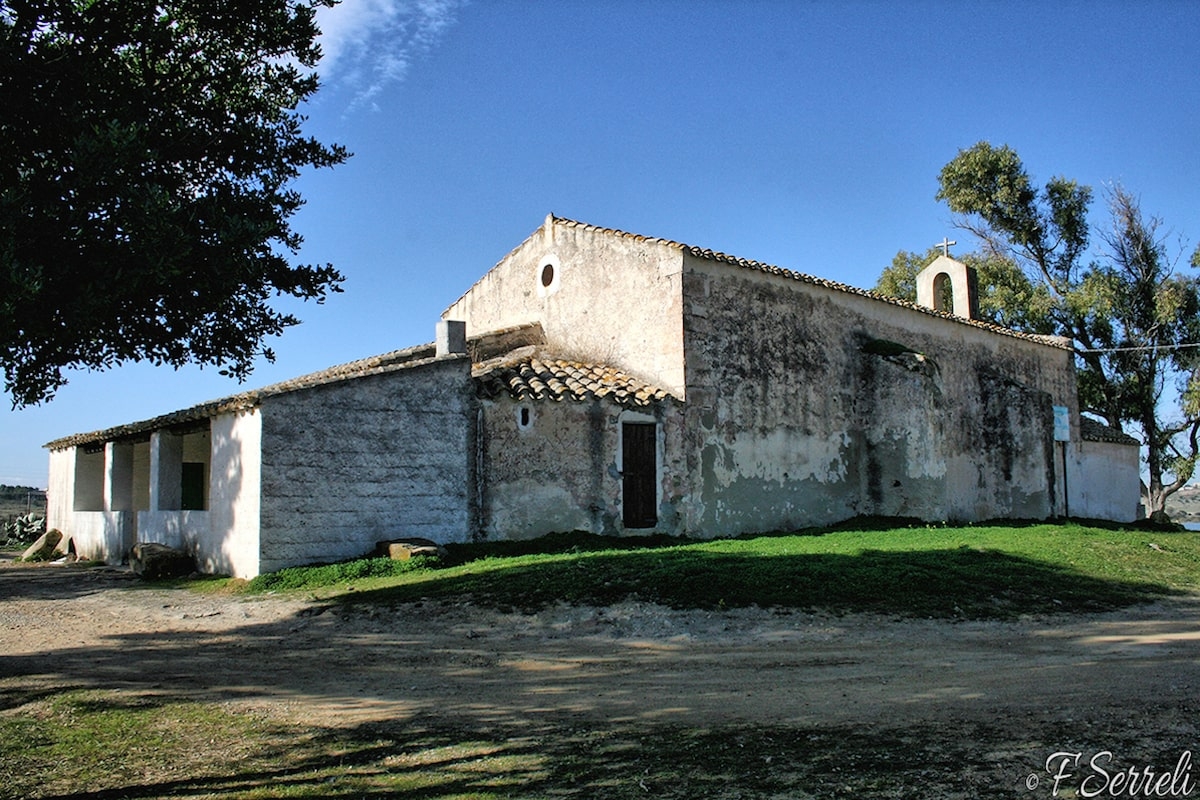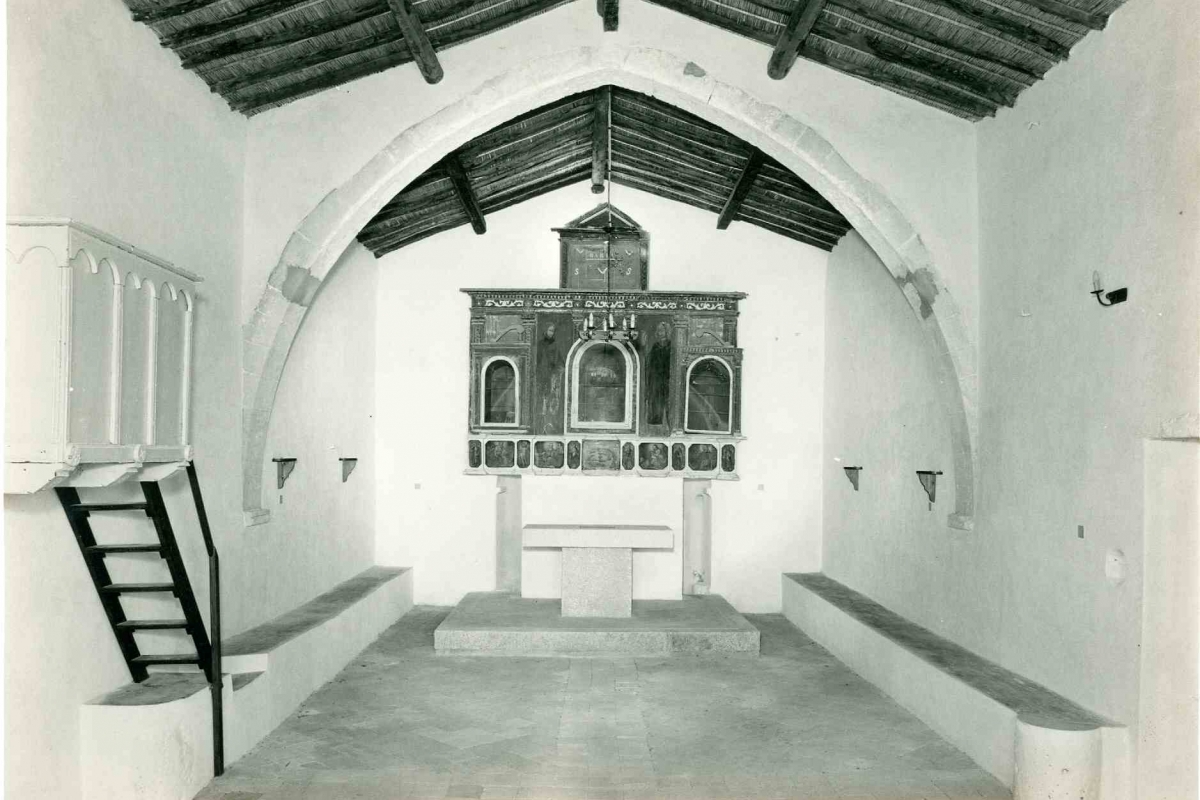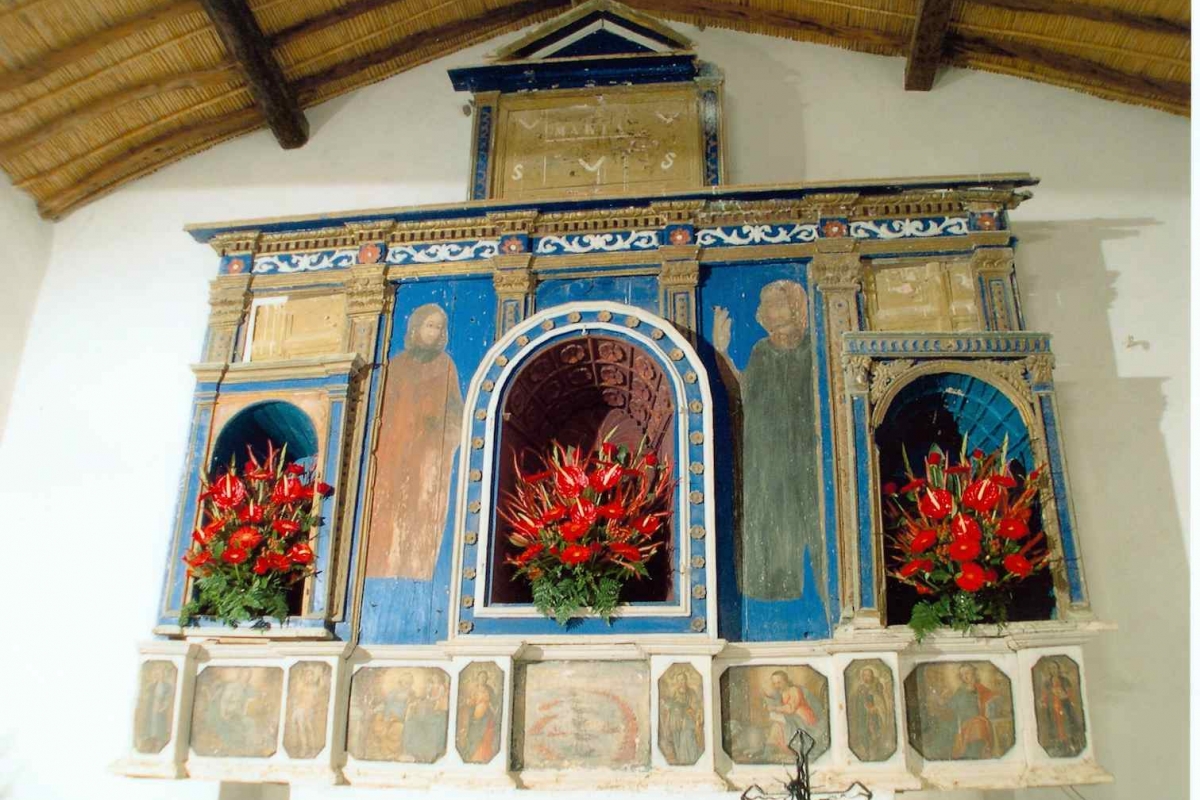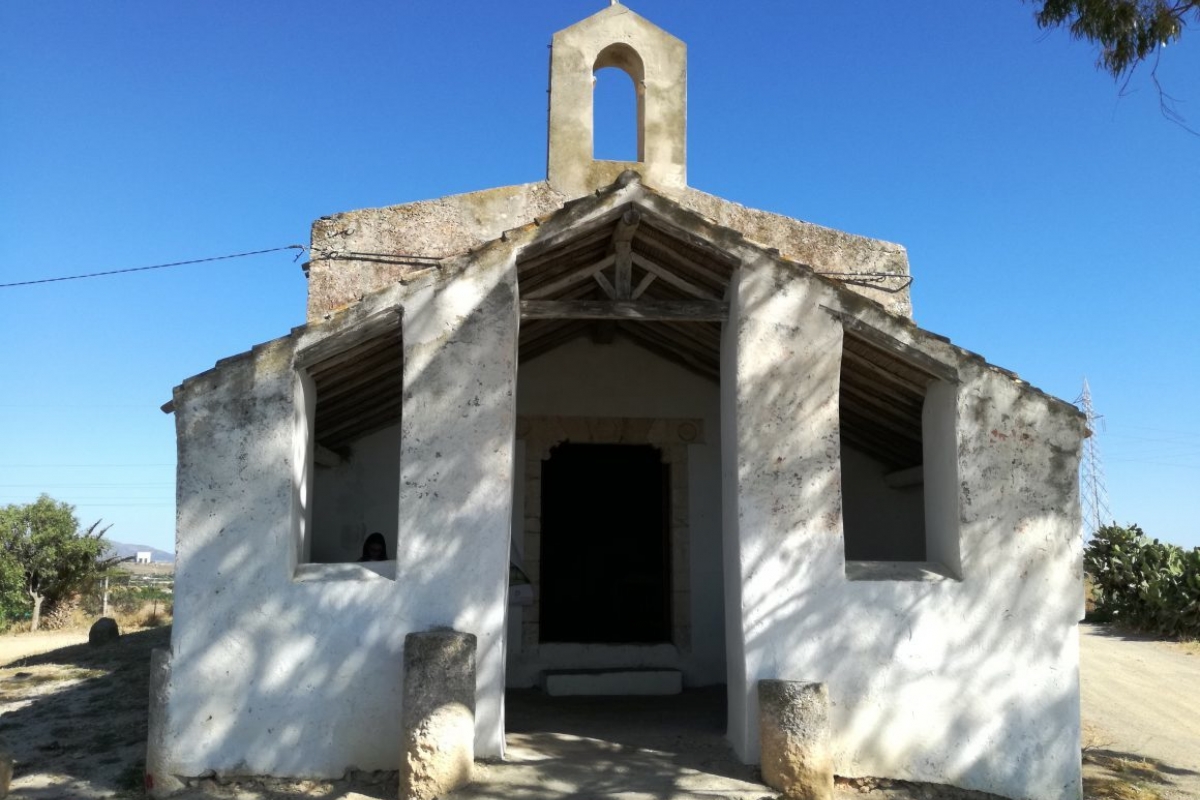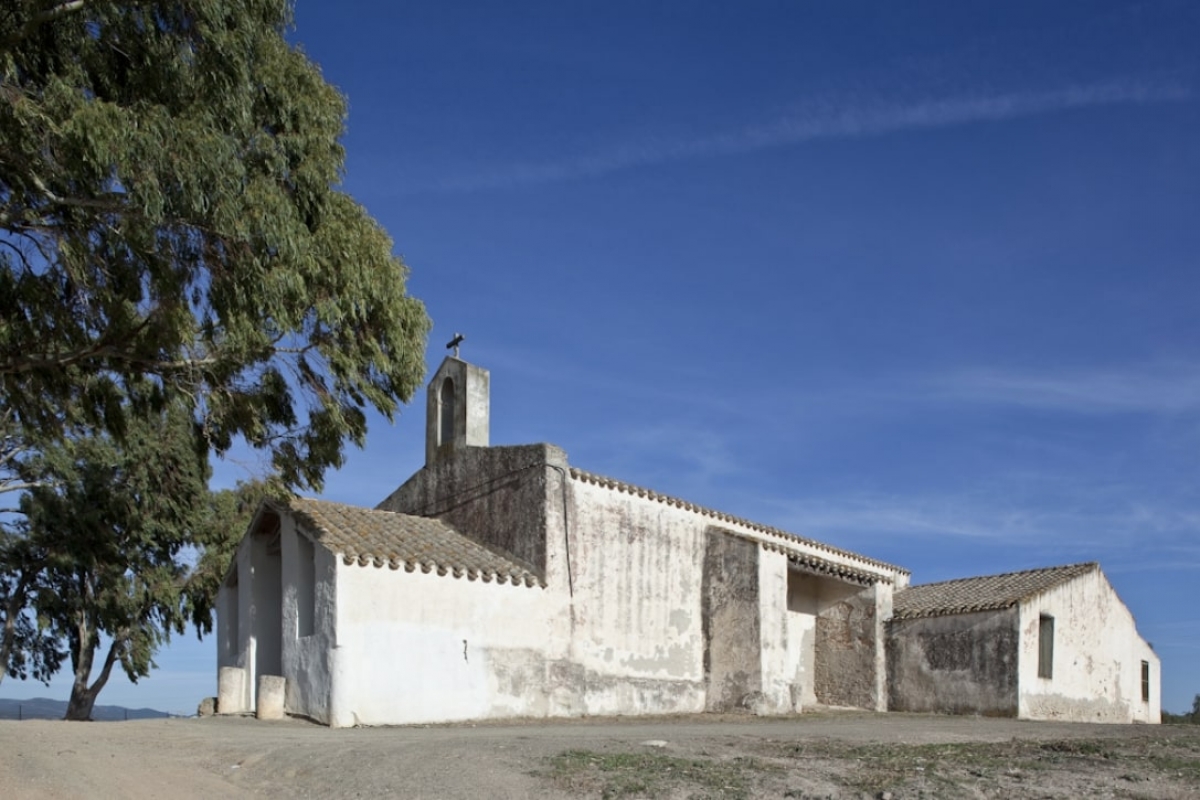Nostra Signora del Buon Cammino Church
The church of Nostra Signora del Buon Cammino known as Santa Maria di Simbirizzi, was built in the 14th century.
Situated on a small promontory overlooking Lake Simbirizzi, it stands on the site of the ancient mediaeval village of Simbilis, near the Roman road that led to the Sarrabus. It is dedicated to Our Lady Odigitria, i.e. of the Buoncammino, patron saint of travellers and pilgrims.
The simple gabled façade of the original 14th-century structure is surmounted by a bell gable and is preceded by a wooden trussed loggia, built around 1500 with the intention of offering shelter to pilgrims on the occasion of patronal feasts.
The rectangular entrance portal is surmounted by an architrave whose jambs and corbels are made of tufa ashlars decorated with small rosettes in the classical style of fine workmanship by the Picapedras (stone masons) of the area.
The building may therefore have been constructed after 1325 and the door restored at a later date with the addition of the loggia. In 1661, as the diocesan archives tell us, the roof was restored and some rooms were added against the main body in 'ladiri', still recognisable in the wall face.
Two external buttresses mark the support of the pointed arches on the inside with exposed sandstone ashlars. Elements of Roman rubble are present inside the monument; in fact, the church may have been built on the ruins of a pre-existing Roman structure.
The rectangular, single-nave hall interior, measuring approximately 10 x 5 metres, houses the old stone altar, hidden by a recent granite mensa on which rests a heavily repainted wooden polyptych, dated approximately 1700, resulting from the assembly of various parts, of which the predella, probably from the destroyed church of Sant'Elia, appears to be the oldest piece (17th century).
The artefact, which still retains its original colouring, consists of eleven panels depicting Saints Cosimo and Damiano, the Evangelists Mark, Matthew, Luke and John, Saints Sebastian, Lucy, Catherine and Rocco, while the central panel depicts a ship landing, presumably in the Gulf of Cagliari. Coming from the same church of Sant'Elias is the small wooden simulacrum of the Holy Prophet (17th century), dressed in a brown habit and carrying a book and the traditional sword.The Virgin of Buoncammino is celebrated on the Sunday of the second fortnight of May.
Source: 'Urban itineraries between archaeology and history' - Liceo Artistico Brotzu and Quartu Sant'Elena Municipal Administration







